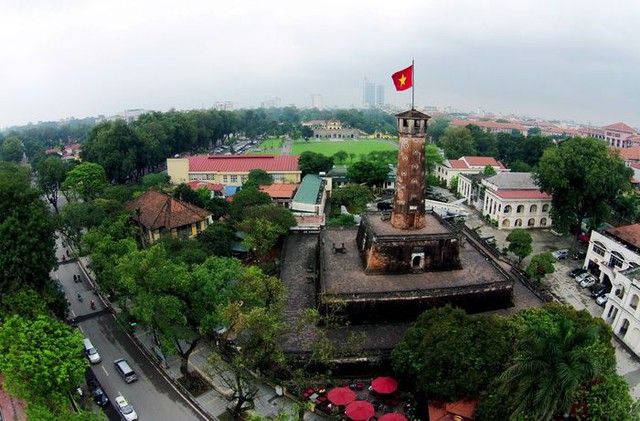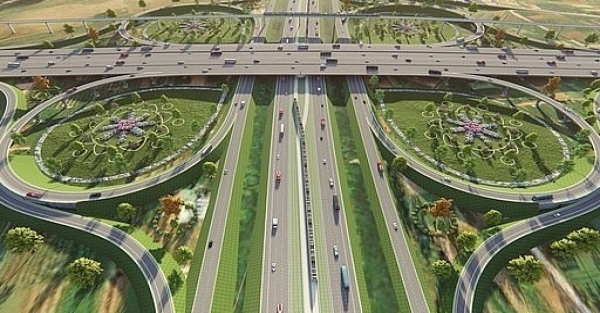Unique qualities make Ha Noi stand out among ASEAN capitals
VGP - As Viet Nam’s political, administrative, and economic center, Ha Noi stands as a city that perfectly blends the energy of a rapidly developing metropolis with the timeless charm of its culture, history, and tree-lined landscapes.

Ha Noi stands as a city that perfectly blends the energy of a rapidly developing metropolis with the timeless charm of its culture, history, and tree-lined landscapes.
This unique balance gives the capital a distinctive character among ASEAN cities, making it not only a thriving business hub but also an increasingly desirable place to live and work.
According to a survey conducted by the Japan External Trade Organization (JETRO), Viet Nam continues to offer a highly attractive investment environment for foreign businesses. Respondents highlighted three major strengths — the country's large and fast-growing market, competitive labor costs, and stable political and social environment. These factors all ranked above the ASEAN average, reaffirming Viet Nam's position as one of the region's leading destinations for foreign direct investment (FDI).
Nevertheless, the survey also pointed out several challenges that continue to concern investors, including complicated administrative procedures, rising labor costs, and underdeveloped legal frameworks with inconsistent enforcement. These issues are not unique to Viet Nam but remain critical factors that influence investor confidence and long-term business planning.
To address these, the government's ongoing efforts to streamline administrative processes and improve transparency are seen as vital. Japanese enterprises, in particular, expect future reforms to simplify procedures such as licensing, minimize overlapping regulations, and ensure more consistent legal interpretations. Achieving progress in these areas would not only enhance the confidence of foreign investors but also strengthen the competitiveness of domestic businesses.
At the same time, the gradual increase in labor costs should be viewed as a natural consequence of economic development and improved living standards. The key for businesses is not merely to absorb these rising costs, but to adapt through innovation, technological upgrades, and workforce training. Such adjustments can improve productivity, sustain growth, and transform challenges into opportunities for advancement.

Ha Noi has emerged as a pivotal player, particularly in northern Viet Nam.
In this evolving landscape, Ha Noi has emerged as a pivotal player, particularly in northern Viet Nam. Thanks to its strategic location, robust infrastructure, and growing industrial base, the capital continues to attract significant manufacturing and investment activity.
As of June 2025, Japanese FDI in Ha Noi reached nearly 1,600 approved projects with a total registered capital of US$12.72 billion. The city alone accounts for about 30 percent of Viet Nam's total approved FDI projects, highlighting its importance as a preferred destination for Japanese investors.
Ha Noi's strong connectivity further enhances its appeal. The capital is linked to surrounding provinces and industrial zones through an extensive expressway network, while Noi Bai International Airport serves as a vital hub for both passenger and cargo transport. Moreover, the city's top-tier universities—particularly in science, technology, engineering, and foreign languages—continue to supply a skilled workforce, providing a solid foundation for innovation and collaboration between academia and industry.
Beyond manufacturing, Ha Noi has also become a vibrant consumer market. As Viet Nam's economy expands and urban incomes rise, global service and retail brands are increasingly turning their attention northward. The opening of 7-Eleven's first store in Ha Noi in June and the groundbreaking of a new Takashimaya shopping center in August exemplify this trend. Traditionally, Japanese service companies entered Viet Nam through Ho Chi Minh City before expanding north, but today, many are choosing Ha Noi as their first point of entry.
The city's urban transformation is also accelerating, supported by major infrastructure projects such as Ha Noi Metro Line No. 2, which is being developed with Japanese assistance. Large-scale developments like the North Ha Noi Smart City—a joint venture between Sumitomo Corporation and BRG Group—and the Starlake urban area, where Takashimaya is located, are reshaping the capital's commercial and residential landscape.
To sustain this momentum, Ha Noi must continue to listen to investor feedback and resolve lingering concerns. Reports of unclear or inconsistent instructions during the issuance of Investment Registration Certificates (IRCs), for example, highlight the need for stronger transparency and predictability in administrative processes. Addressing these concerns will not only enhance investor satisfaction but also strengthen Ha Noi's image as a reliable and business-friendly destination.
Yet Ha Noi's strengths extend far beyond its economic dynamism. The city's cultural richness, green spaces, safety, and high quality of life make it stand out among ASEAN capitals. It is not merely a center of commerce and governance, but a city that harmonizes growth with livability—where progress is measured not only in economic terms but also in the well-being of its people.

Nhat Tan Bridge in Ha Noi is a symbol of Viet Nam-Japan friendship because it was a collaborative project built with funding from the Japanese government's Official Development Assistance (ODA) and the Vietnamese government.
Looking ahead, maintaining this balance between growth and sustainability will be key. With continued efforts to promote innovation, reform, and environmental stewardship, Ha Noi is well positioned to consolidate its reputation as one of Asia's most promising and livable cities.
Japanese businesses remain confident in the capital's future. With its blend of economic vitality, stability, and quality of life, Ha Noi is poised to remain a destination that global enterprises—and their people—will proudly call their second home./.

